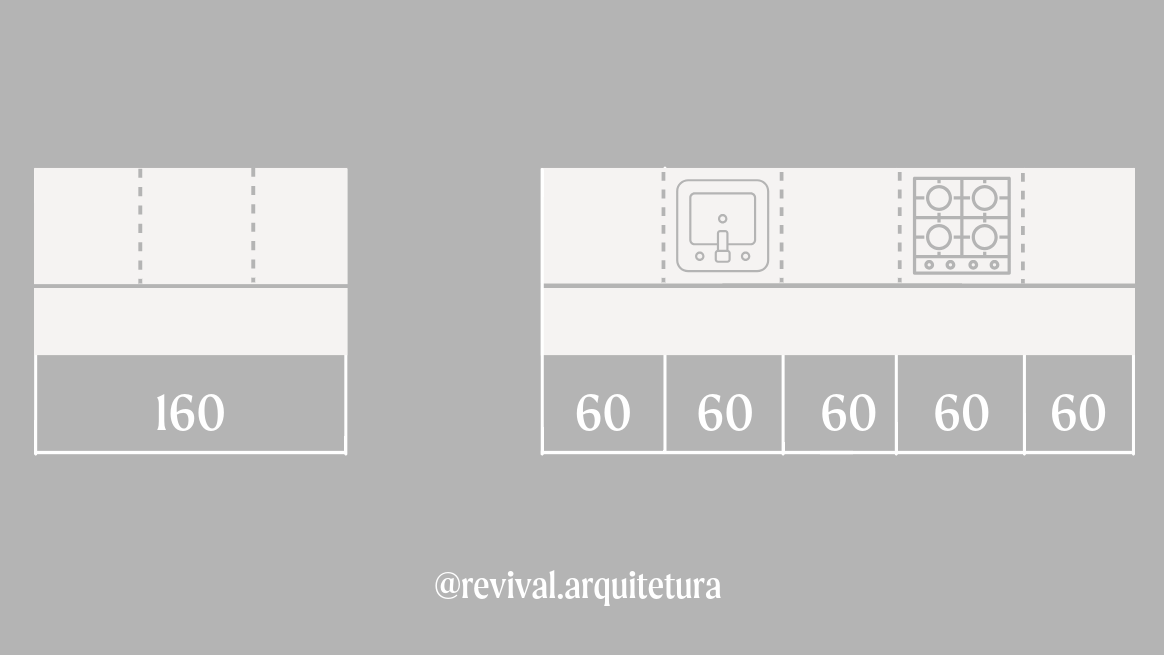The island in a kitchen brings undeniable power, but they are not always viable. If you want to add this element to your kitchen, this blog will tell you a little about what you need to consider in this choice!
The kitchen is the ideal environment for gathering family and friends where memories and affectionate memories are created. The island transforms into a community center, where stories are told and special moments are lived.
It is in the kitchen that we share meals, conversations and laughs, creating bonds that last a lifetime. Therefore, combining functionality with design creates a practical and aesthetically pleasing environment. The kitchen island has become an increasingly popular and desired feature in many modern homes.
Check out our Interior Project:
Cozinha com Ilha – Estúdio Revival
If you’re thinking about renovating your kitchen or building a new one, an island can be a great addition. But before taking that step, there are some important points to consider:
Space around the island
A kitchen island generally requires space. It is important to measure your kitchen to ensure there is enough space for circulation around the island, it should be comfortable, and allow a fluid flow around it.
The ideal is to have at least 0.90 centimeters of free space on all sides of the island to allow comfortable movement, opening appliances and two people standing side by side, for example.
Think about how you intend to use the island. Will it primarily serve as a food preparation space? Will it be used for quick meals or even as an additional work area? Plan the island layout according to your specific needs to ensure it is functional and efficient.
Layout & Storage
One advantage of having a kitchen island is the additional storage space it can offer. Including drawers, shelves, cabinets in the island to store utensils, pans and other kitchen items increases the functionality of your kitchen, but also helps keep the area organized.
Before talking about measurements, it is important to ask yourself some questions to better understand your needs:
- Do I want a work island with a stove top or sink?
- Do I want an island with just a bench and seats?
- Do I want a work island + bench with seating for meals?
- Do I want built-in appliances at the bottom of the island?
These are just some of the initial questions the interior architect asks in a brief to understand your design and space needs.
Island Width:
All the questions asked previously influence the measurements of your island. Let’s start by considering that the standard depth of a countertop is 0.60 cm, which is the measurement that most appliances occupy. However, it would be a mistake to rely solely on this measurement, when each model of appliances and furniture has a different size. The aesthetics and items you choose will directly influence your space, hence the importance of a trained professional to guide you in all decisions in the best way.
However, it is important for you to know: For a kitchen island to be considered comfortable, it must be at least 90 cm wide and a maximum of 120 cm, this is the base we take here at Estúdio Revival. With these measurements, you can work on several different designs with as many elements as you want.

Island Length:
Again, it depends on your needs, if you want it to function only as a countertop, without a sink, for example, 0.90 cm to 1.60 cm long, it will perfectly meet your needs. However, if you want the cooktop or sink, even both to be there, you need more space.
It is also worth highlighting the space between the pieces, which is essential, at least 60 to 60 cm, this ensures that the working space is not cramped when cooking. As for the space on the sides, at least 30 cm is reserved, ideally up to 60 cm for greater safety and comfort.

Island Height:
The standard height for a kitchen island is generally between 0.90 cm and 0.95 cm from the floor to the countertop surface. This is considered comfortable for most people and allows for an ergonomic space for working in the kitchen while standing.
The ideal height for a kitchen island depends on several factors, such as the intended use of the island, the average height of the users, and the overall design of the kitchen. In addition, there is a work bench part and a separate bench part for socializing and dining.
Design and Style – Lighting and Installations

When it comes to design, the island certainly has a lot of presence in the environment, having a beautiful design, well-selected materials and equipment make all the difference! Consider lighting over the island, which not only adds a decorative element but also improves visibility during food preparation.
Electrical outlets are also essential if you plan to use the island for appliances like blenders or toasters.
It’s worth highlighting that a professional’s personalized design makes a difference in your environment, conveying your taste and personality 🙂
Cost and Budget:
A kitchen island can vary significantly in cost depending on size, materials and additional features. Establish a clear budget before starting the project and research different options to find one that fits your budget.
A kitchen island can transform not only the functionality but also the aesthetic appeal of your kitchen. By considering all of these aspects before starting the project, you can ensure that your island not only meets your practical needs, but also becomes the center of activity and socializing in your home. With proper planning, a kitchen island can become not only an efficient workspace but also a welcoming focal point for all family and friends to gather.




